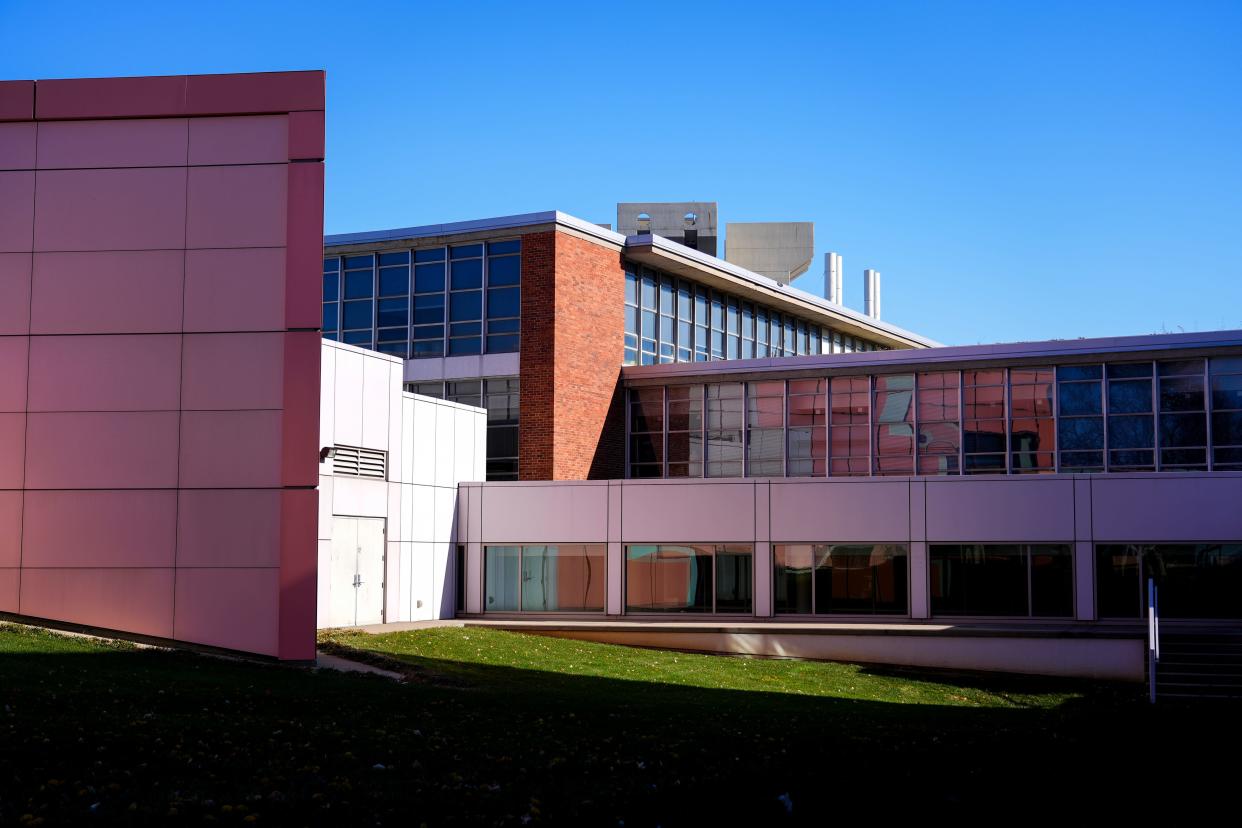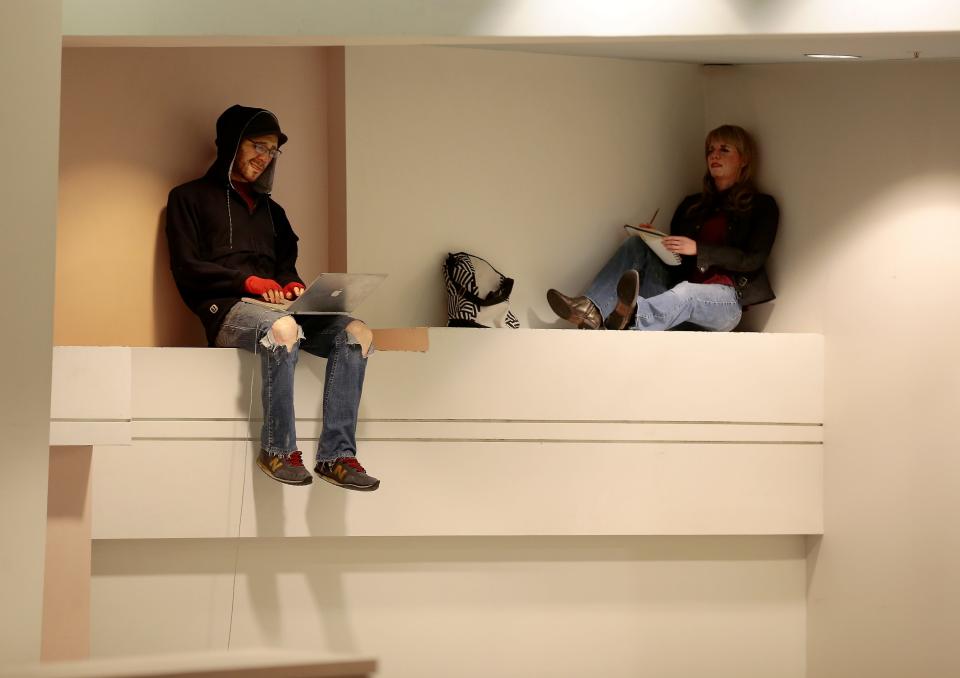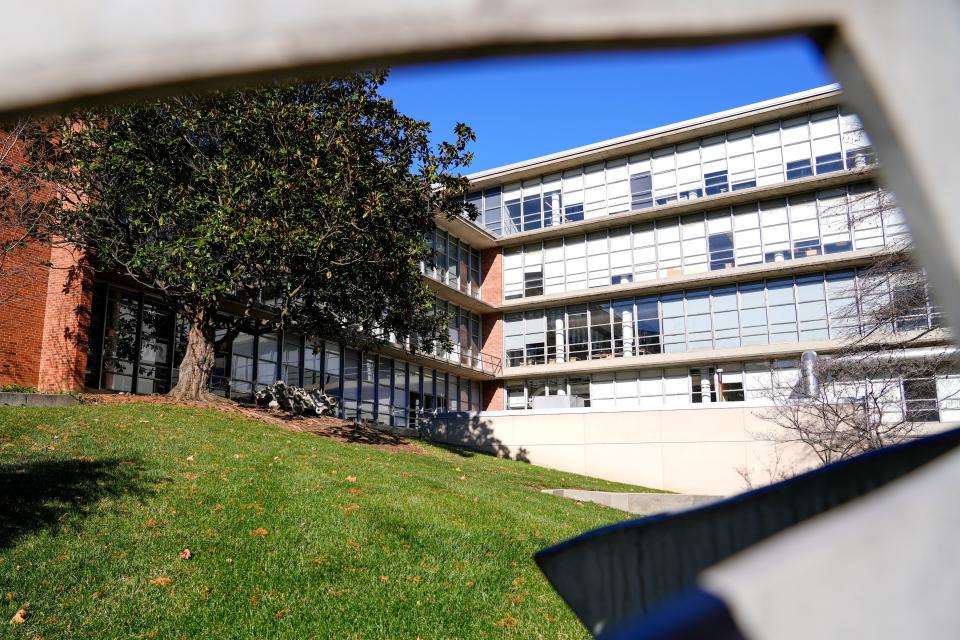MFA program 'cannot survive' with proposed changes, University of Cincinnati faculty say

University of Cincinnati's fine arts graduate students are at the heart of the region's art scene. They are teaching artists at the Cincinnati Art Museum and present work at the Contemporary Arts Center in Downtown.
They go on to teach at the Art Academy of Cincinnati and at other area schools. Graduates work with ArtWorks, the nonprofit behind Cincinnati's iconic and beautiful city murals, and ArtsWave, the organization that funds a large share of the city's art projects and performances.
But faculty say the 50-year-old program is in jeopardy if the university goes through with a newly proposed funding model that reduces aid to fine arts students. According to the administration, the new funding policy aims to make graduate programs more equitable across the university's College of Design, Architecture, Art, and Planning, called DAAP.
Instead of leveling the playing field, faculty in the master of fine arts program say the changes would make it impossible to recruit new fine art students and effectively destroy the program. Faculty say that would be a tragedy for the university and devastating for the city of Cincinnati, which has championed art and creativity for decades.
The university declined to share specifics about its graduate funding changes. But according to an open letter from faculty to university President Neville Pinto and Provost Valerio Ferme, the new plan would have master of fine arts students pay for about two-thirds of their studies, on average. Other programs in the region fully fund their graduate art students.
"We as a faculty believe that the arts are a crucial component of a vibrant city and are extremely concerned about what this shift would mean for the University of Cincinnati, our research, faculty retention, and undergraduate programs," the faculty's open letter reads. It posted Dec. 14 and garnered more than 550 verified signatures in less than a week.

"Without a pipeline of highly trained artists, art organizers, and arts leaders, Cincinnati will lose the vibrancy and appeal that has helped both the city and the university grow over the past decade," the letter says. "In plain terms, this will be an immeasurably large hit to Cincinnati’s creative and nonprofit community."
In response to the letter, Timothy Jachna, the dean of the college, said the college only has enough money to cover about 35% of graduate tuition. The new policy distributes that money across the college's six graduate programs in alignment with enrollment, instead of ad hoc, "to give students in all programs equal opportunity to benefit from this common fund."
Historically, the master's in fine arts has gotten the largest allocation of tuition coverage, Jachna said, so the department will receive less funding than it has in the past. But the program should rely on funding outside allocations from the Graduate School, he said, and the college is committed to finding additional resources to keep it going.
"We are working to forge a way forward for this program, including the student financing question but also broader issues of communication, recruitment, resourcing, etc., while equitably providing opportunities to students in all masters programs in the college," Jachna wrote.
How other Ohio MFA programs compare
Other master of fine arts programs in the region fully cover fine art students' tuition and even offer stipends, including the studio art program at Miami University. At Miami, all 12 studio art graduate students have assistantships. That means they work 20 hours a week while taking classes to receive full tuition and a yearly $14,000 stipend.
Funding its graduate students allows Miami to compete for top applicants, said Dana Saulnier, Miami's graduate director for fine art.
"We want the best students," she said. "We want to create communities that excel at meaningful experimentation in the arts. Having a rigorous graduate program fosters the kind of intense educational environment that benefits everyone involved, not least, our undergraduate students."
That's also been true at University of Cincinnati. Graduate students and alumni teach roughly three-fourths of the art school's courses, faculty wrote in their letter to Pinto. Without graduate students, the college's undergraduate program would suffer, too.
"As the only MFA program in the city, the majority of arts faculty at the Art Academy of Cincinnati are also our alumni," the letter from University of Cincinnati faculty says. "These actions will have impacts that will quickly spread beyond the University and into the fabric of Cincinnati."
Faculty in other departments have funding fears, too
Evan Torner, a German studies graduate professor at University of Cincinnati, said he's seen this play out before. The German department is in its second year of being unable to recruit a cohort of Ph.D. students.
"We're at a point where the bachelor's degree is in jeopardy if things continue as they are," Torner said.
The university's moves are in line with national trends to shrink arts and humanities programs. Miami University announced earlier this year that it's consolidating 18 humanities majors.

University of Cincinnati's fine art faculty are hoping they can avoid the same fate. In their letter to Pinto, faculty asked the university to reconsider its proposed funding model and commit to funding the master of fine arts program's first-year students. The department developed a five-year plan in September to raise $5 million to support the graduate program on its own, before it was aware of the new budget model.
"One of the central components of this plan is to reach out to donors, corporations, and entities that may not realize the impact that our program has on their businesses, the community, and the city as a whole," the letter says.
The college's new funding policy is set to start in the fall of 2024.
This article originally appeared on Cincinnati Enquirer: Art students, faculty beg UC to reconsider graduate school funding

